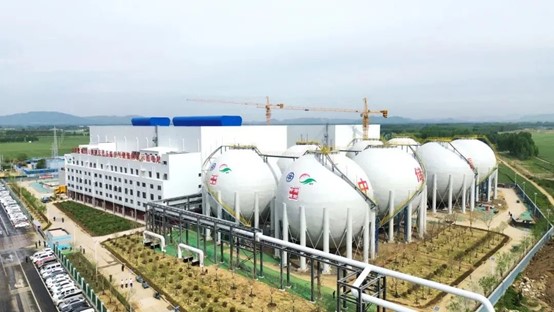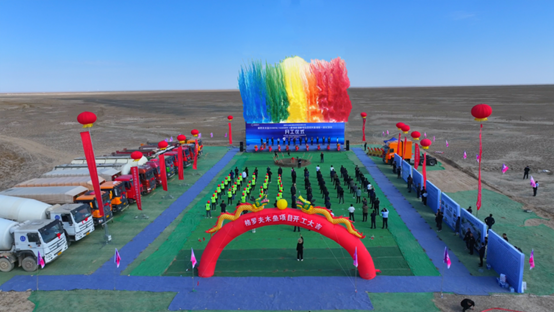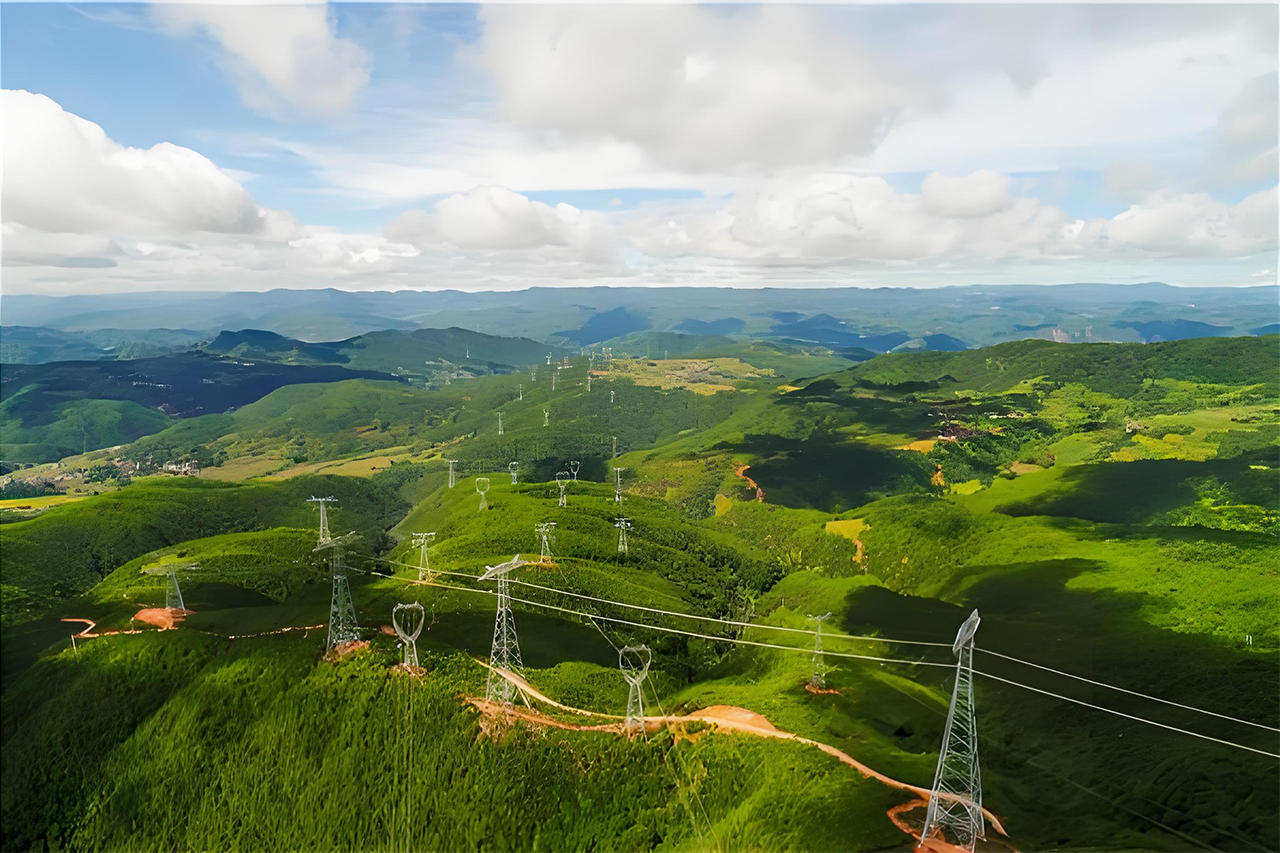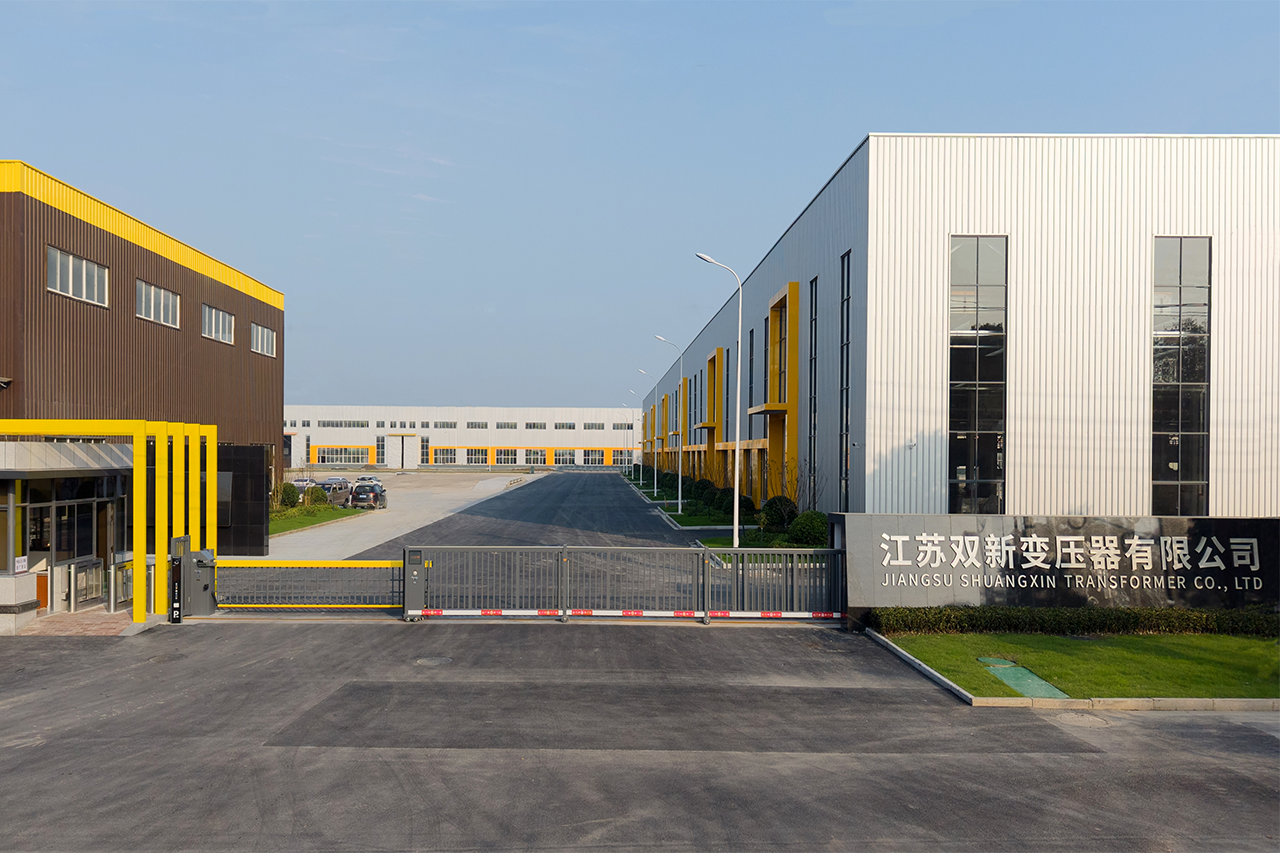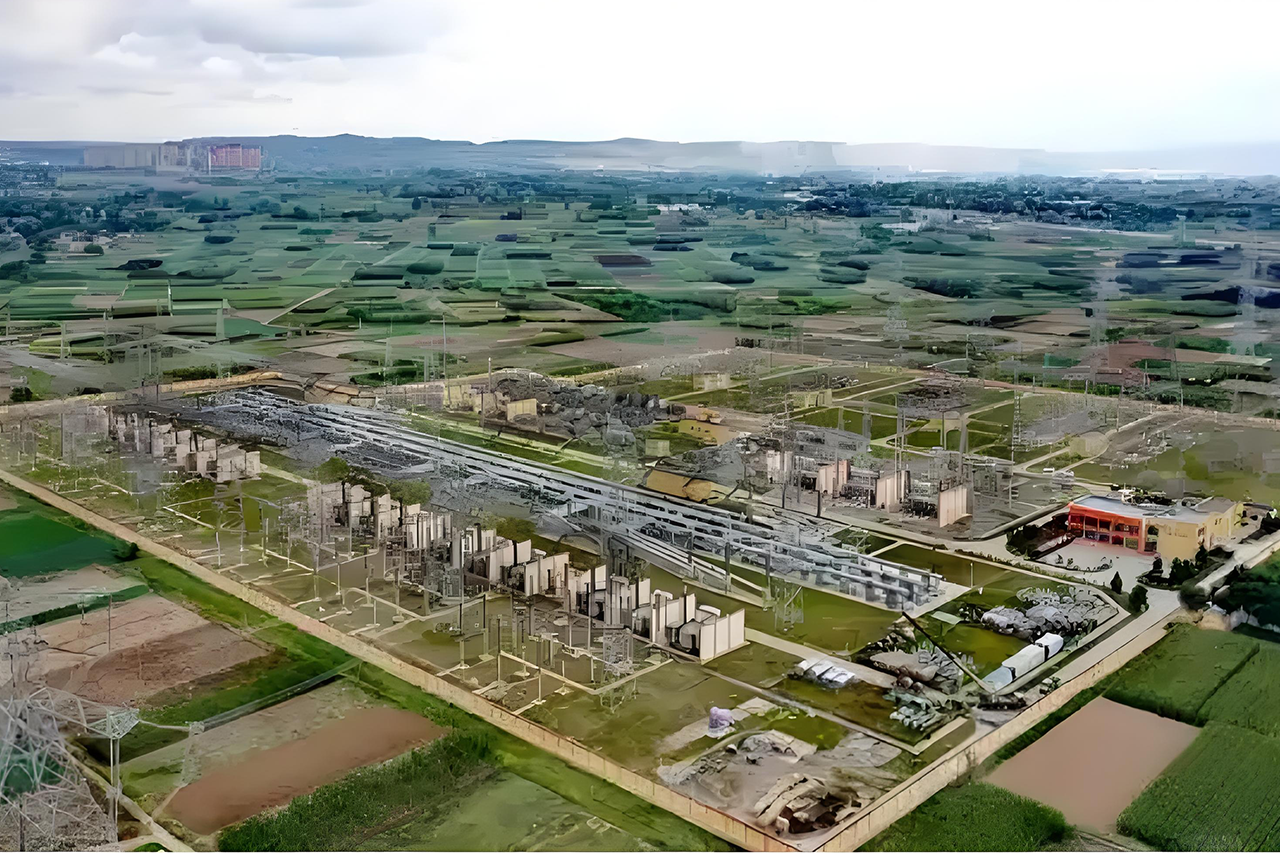Achieving carbon peak and carbon neutrality is a broad and profound transformation of the economic and social system, with the core being the transformation of the energy structure. The transformation of the energy structure refers to the gradual shift from a fossil energy-based system to a new energy system primarily based on renewable energy. Correspondingly, the power system will also undergo systemic changes.With the deepening of the dual-carbon goal, the contradiction between the large-scale development of renewable energy and its unstable natural properties has become increasingly prominent, and has become a major challenge to the construction of a new energy system.
Energy storage plays an important role in the new energy system. How to base on the basic national conditions of China’s energy resource endowment, scientifically plan and develop various energy storage technologies with high quality is a key issue in the new energy system. In recent years, with the rapid development of China’s renewable energy, especially in 2023, when China’s renewable energy accounted for more than 50% of the total power installation for the first time, it is of milestone significance. Since long-duration energy storage technology can provide the power grid with higher reliability and flexibility to support and supplement the large-scale integration of renewable energy, long-duration energy storage has attracted more and more attention and is considered to be the focus of future energy storage technology and industry development. However, China’s long-duration energy storage is still in its early stages of development, and its definition has not yet been fully unified, with many challenges affecting its high-quality development, which this article will preliminarily explore.
I.Definition of Long-Duration Energy Storage
Globally, there is no unified definition of long-duration energy storage internationally. Different countries and institutions have given different definitions of long-duration energy storage based on energy structure, power systems, policy, and market characteristics. The U.S. Department of Energy (DOE) defines it as an energy storage system with a rated power continuous operation (discharge) of more than 10 hours and a service life of 15 to 20 years; Sandia National Laboratories considers long-duration energy storage technology to be energy storage technology with a continuous discharge time of not less than 4 hours; The California Energy Commission (CEC) and the Advanced Research Projects Agency-Energy (ARPA-E) define energy storage systems of 10 hours and above as long-duration energy storage; The Long Duration Energy Storage Council (LDESC) has proposed two definitions, namely, energy storage technology of 8 to 24 hours and energy storage technology of more than 24 hours.
Combining the current status of renewable energy development in the United States, it can be seen that since the Biden administration, renewable energy in the United States has developed rapidly, and many regions have gradually adopted 4-hour energy storage systems for peak power demand services. Some regions have established a “4-hour capacity rule,” allowing energy storage systems that can operate continuously for more than 4 hours to receive compensation in the capacity market or other contracts providing capacity. Based on this rule, about 40% of the energy storage systems deployed in the United States from 2021 to 2022 were energy storage systems with a duration of 4 hours. However, due to the aging of the current power grid system and power equipment in the United States, it has begun to face grid restrictions and backlogs in grid connection queues. Faced with the continuous increase in power demand and the high proportion of renewable energy access, the United States urgently needs energy storage of more than 4 hours to improve the efficiency and reliability of the power grid to accommodate renewable energy.
Shandong Feicheng 300MW advanced compressed air energy storage national demonstration power station
From the perspective of power grid structure and electricity consumption scale, the situation in China and the United States is quite similar; however, in terms of the scale and technical level of renewable energy development, China’s key indicators of installed capacity and power generation far exceed the current level of the United States. Therefore, based on the current situation and development trend of China’s renewable energy and power system, we believe that the definition of long-duration energy storage suitable for China’s national conditions is: large-scale low-cost energy storage technology that can achieve continuous discharge for 4 hours or more, or for several days or months, at rated power. Specifically, according to the development stage of China’s new energy system and the overall demand for flexible energy storage, long-duration energy storage technology can be divided into:
(1) Medium and long-duration energy storage, mainly refers to energy storage systems that can operate continuously (discharge) for 4-10 hours at rated power;
(2) Long-duration energy storage, mainly refers to energy storage systems that can operate continuously (discharge) for 10 hours to 1 week at rated power;
(3) Ultra-long-duration energy storage, mainly refers to energy storage systems that can operate continuously (discharge) for more than 1 week at rated power.
II.Main Characteristics and Functions of Long-Duration Energy Storage Technology
At present, long-duration energy storage can be divided into four main lines: physical energy storage, chemical energy storage, thermal energy storage, and hydrogen energy storage, including specific technologies such as pumped hydro storage, compressed air energy storage, gravity energy storage, flow batteries, molten salt thermal storage, and various hydrogen storage technologies. With the large-scale development of renewable energy, long-duration energy storage technology will be a key link in the future new energy system, and it has the following main characteristics:
First, the long time scale, long-duration energy storage has a long time charge and discharge cycle capability, which can achieve long-time, cross-day, cross-week, cross-month and even cross-season power regulation, and with the increase of renewable energy proportion, the total energy storage time in the power system increases, and the proportion of long-duration energy storage increases.
Second, the large energy storage capacity, long-duration energy storage has a large energy storage capacity, power and capacity can generally achieve decoupling, and can store and release a large amount of electrical energy according to different power and capacity requirements.
Third, the low unit cost, large-scale long-duration energy storage can significantly reduce the cost per kilowatt-hour. Taking pumped hydro storage as an example, its cost per kilowatt-hour is only 0.21-0.25 yuan/kWh.
Fourth, technological diversity, long-duration energy storage covers a variety of technological routes, each technology has its unique working principle and applicable scenarios, which can be selected and optimized according to actual needs. Different technologies can complement each other to form a more complete energy storage system.
Grove Tree 200MW/1600MWh hydrogen energy storage peaking power station and wind hydrogen storage vehicle integration project started
It is generally believed that the quantitative change brought by the continuous increase in the proportion of renewable energy installation and power generation will gradually cause essential changes in the physical form and technical framework of the energy system, especially the power system. In this process, the proportion of long-duration energy storage will also gradually expand. The International Long Duration Energy Storage Council (LDES) announced at the 26th annual summit of the United Nations Framework Convention on Climate Change in 2021 that when the proportion of renewable energy power generation reaches 60% to 70%, long-duration energy storage will become the “lowest cost flexibility solution,” and predicted that by 2030, the global cumulative installation of long-duration energy storage will reach 150-400GW, and by 2040, the cumulative installation of long-duration energy storage will further increase to 1.5-2.5TW.
China has become a major renewable energy country. At the end of 2023, China’s renewable energy installation exceeded 1.45 billion kilowatts, accounting for more than 50% of the national power installation, surpassing thermal power installation, ushering in a historic moment. Long-duration energy storage will play a more important role in this new energy system with large-scale new energy access:
First, it provides the power system with long period adjustment ability and supports the adjustment of energy structure. The use of long-term energy storage technology can support the power system to achieve cross-day and cross-week dynamic balance in different spatial and time scales
Second,it responds to energy demands under extreme weather conditions and enhances the safety characteristics of the power grid. Long-duration and ultra-long-duration energy storage technologies can improve the safe and stable operation of the power system under extreme weather conditions.
Third, it improves the flexibility of the power system and enhances the resilience of the power system. By exploring and enhancing the value of short-duration energy storage, increasing the deployment of energy storage technologies with multiple time scales, and achieving coordinated cooperation between sources, grids, loads, and storage, it adapts to the development of the new power system and safeguards the planning and construction of new energy systems and new power systems.
III. Development Status and Main Suggestions:
During the “14th Five-Year Plan” period, China has achieved outstanding results in the field of long-duration energy storage technology. It has created several international first-of-its-kind demonstration projects in compressed air energy storage, flow batteries, and hydrogen energy; pumped hydro storage units have advanced towards 300MW AC excitation variable speed pumped hydro storage units; the world’s first 300MW advanced compressed air energy storage technology has been grid-connected; thermal storage technology has achieved the global first electric heat molten salt energy storage test station and the commissioning of the 660MW coal-fired power unit coupled with steam molten salt thermal storage peak shaving. In new energy storage construction projects, hundred-megawatt class and medium and long-duration energy storage have become the norm. It is estimated that China’s long-duration energy storage installation scale will be about 23 million kilowatts in 2030, accounting for about 20% of the total scale of new energy storage installations during the same period; the ultra-long-duration energy storage installation scale will be about 150 million kilowatts in 2060.
In terms of policies and regulations, the Chinese government has successively issued documents such as the “Guiding Opinions on Accelerating the Development of New Types of Energy Storage” and the “Opinions on Deepening the Reform of the Power System and Accelerating the Construction of a New Type of Power System,” promoting the large-scale application of large-capacity long-duration energy storage technology. The National Energy Administration pointed out in the “Blue Book on the Development of New Types of Power Systems” that China needs to meet the balance and regulation needs on a daily and above time scale from 2030 to 2045, and cover the operation of various types of energy storage systems throughout the entire cycle from 2045 to 2060.
Guangdong Meizhou pumped storage power station
Building a new energy system is a long-term systematic project that needs to be steadily advanced based on the secure and reliable substitution of new energy, based on the national energy resource endowment. China has a vast territory, and the development of renewable energy varies from province to city, with different resources and electricity demands. Regarding energy storage, some areas belong to the advanced development model, some areas choose to deploy various energy storage technologies comprehensively, and some areas focus on developing a certain type or a certain application scenario of energy storage technology. Therefore, for the future development of China’s long-duration energy storage technology and industry, it is even more necessary to give play to the linkage and regional collaboration mechanism of national and local policy planning, and to jointly promote the healthy development of long-duration energy storage technology. The specific measures are as follows:
First, adhere to top-level design and scientific planning. Scientifically carrying out long-duration energy storage planning that combines both the near and long term is conducive to resolving the uncertainty of stakeholders, enhancing market confidence, guiding the establishment of a long-duration energy storage supply chain, and providing security for the high-quality development of low-cost long-duration energy storage. Accelerate the establishment of a world-class national laboratory for long-duration energy storage, gather the resources and strength of the entire industry, rely on major scientific research infrastructure, and jointly establish a strategic research and development and collaborative innovation platform with industry associations, scientific research institutions, and universities to continue energy storage technology research and development. Build a long-duration energy storage technology standard system, and optimize the standard system in a timely manner in combination with the industry development level and emerging application scenarios to improve the overall technical level of the industry.
Second, adhere to the coordinated development of renewable energy and long-duration energy storage. Conduct scientific demonstrations on the scale and proportion of renewable energy storage, and plan different durations and scales of long-duration energy storage technology according to local conditions and times. Give full play to the linkage mechanism between national and local governments, actively guide the demonstration and industrialization of long-duration energy storage technology in energy bases, and explore and improve the coordinated and integrated development model of renewable energy and long-duration energy storage. At the same time, clarify tax credits, carbon pricing, and greenhouse gas emission reduction targets in policies as early as possible to guide the convergence of various positive factors such as markets, capital, and talent to promote development.
Third, further improve the market mechanism for long-duration energy storage. First, establish and improve the energy storage value evaluation system, explore a tiered capacity bidding mechanism, and improve the electricity price mechanism including long-duration energy storage projects. Second, establish and improve the policy guarantee mechanism for long-duration energy storage, and gradually improve it from aspects of project management, scientific and technological innovation, market environment, price mechanism, and industrial development. Finally, in the demonstration application stage, direct technical support and support measures can also be discussed, including technology transfer rewards, priority support from national bonds, and loan guarantees, as well as direct compensation for services and resources provided by long-duration energy storage systems to increase the confidence of investors entering this field in deploying long-duration energy storage.
Cited: Arctic Star Network, Zhongguancun Energy Storage Technology Alliance, Chen Haisheng

